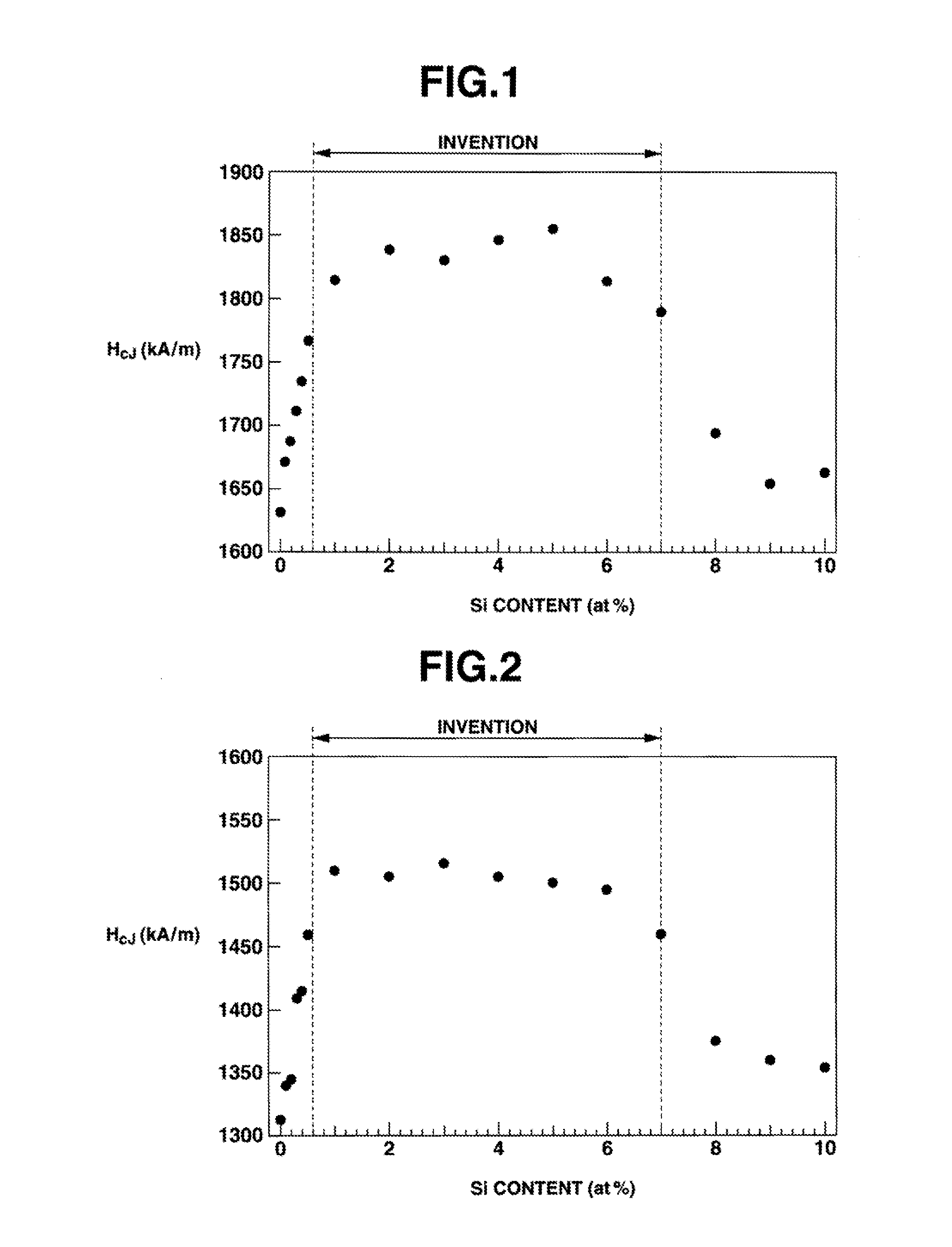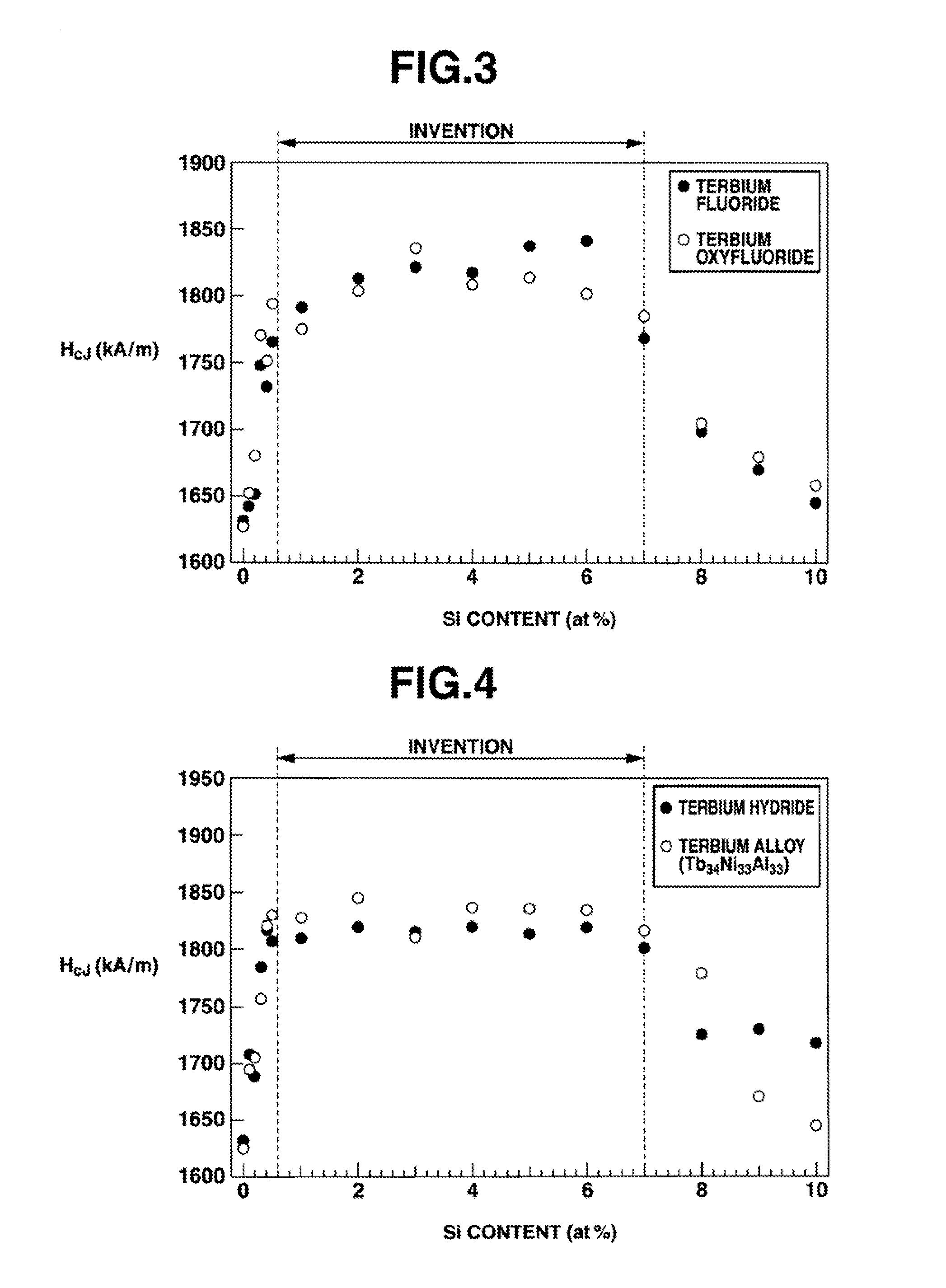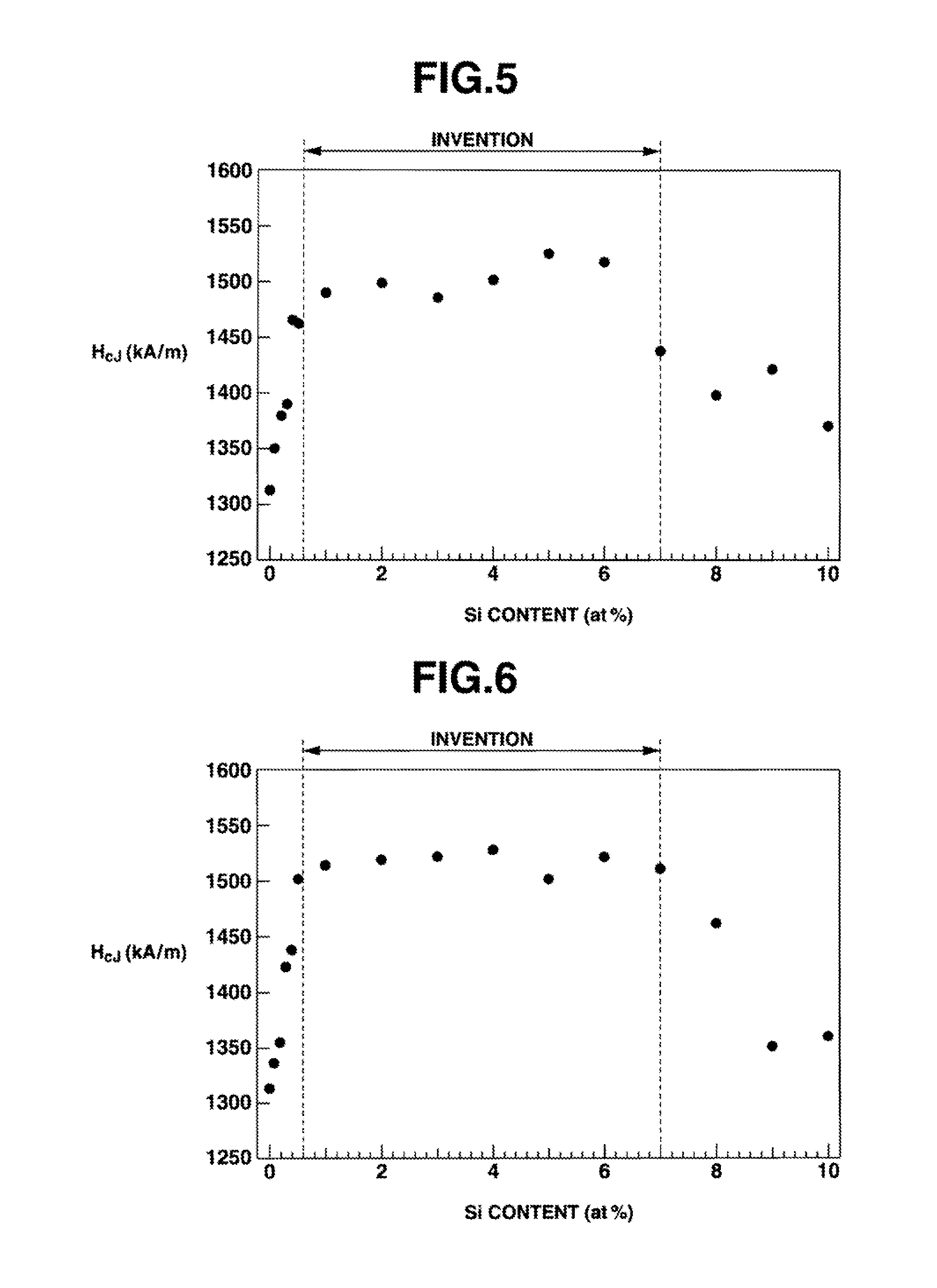Rare earth sintered magnet and making method
a making method technology, applied in the field of high-performance rare earth sintered magnets, can solve the problems of unavoidable trade-off between coercivity and remanence, decline of remanence (or residual magnetic flux density), and only about 15% (1 ma/m) of anisotropic magnetic field coercive force actually available, and achieve excellent magnetic properties and high coercivity.
- Summary
- Abstract
- Description
- Claims
- Application Information
AI Technical Summary
Benefits of technology
Problems solved by technology
Method used
Image
Examples
example 12
[0097]Three ribbon form alloys consisting of 14.5 at % Nd, 0.2 at % Cu, 6.2 at % B, 1.2 at % Al and 1.2 at % Si, 2 at % Al and 3 at % Si, or 5 at % Al and 3 at % Si, and the balance of Fe were prepared by the strip casting technique, specifically by using Nd, Al, Fe and Cu metals having a purity of at least 99 wt %, Si having a purity of 99.99 wt %, and ferroboron, high-frequency heating in an Ar atmosphere for melting, and casting the melt onto a single chill roll of copper. The alloys were exposed to 0.11 MPa of hydrogen at room temperature so that hydrogen was absorbed therein, heated up to 500° C. while vacuum pumping so that hydrogen was partially desorbed, cooled, and sieved, collecting a coarse powder under 50 mesh.
[0098]Each coarse powder was finely pulverized on a jet mill using high pressure nitrogen gas, into a fine powder having a median diameter of 50 μm. The fine powder was compacted under a pressure of about 1 ton / cm2 in a nitrogen atmosphere while being oriented in a...
example 13
[0102]Magnet blocks were prepared as in Example 12 except that dysprosium oxide (average particle size 0.35 μm, average coating weight 50±5 μg / mm2) was used instead of terbium oxide.
[0103]The coercivity of the resulting magnet blocks was measured, with the results shown below.
Magnet with Al and Si contentsCoercivity1.2 at % Al and 1.2 at % Si1,701 kA / m3 at % Al and 2 at % Si1,758 kA / m5 at % Al and 3 at % Si1,863 kA / m
PUM
| Property | Measurement | Unit |
|---|---|---|
| temperature | aaaaa | aaaaa |
| temperature | aaaaa | aaaaa |
| size | aaaaa | aaaaa |
Abstract
Description
Claims
Application Information
 Login to View More
Login to View More - R&D
- Intellectual Property
- Life Sciences
- Materials
- Tech Scout
- Unparalleled Data Quality
- Higher Quality Content
- 60% Fewer Hallucinations
Browse by: Latest US Patents, China's latest patents, Technical Efficacy Thesaurus, Application Domain, Technology Topic, Popular Technical Reports.
© 2025 PatSnap. All rights reserved.Legal|Privacy policy|Modern Slavery Act Transparency Statement|Sitemap|About US| Contact US: help@patsnap.com



